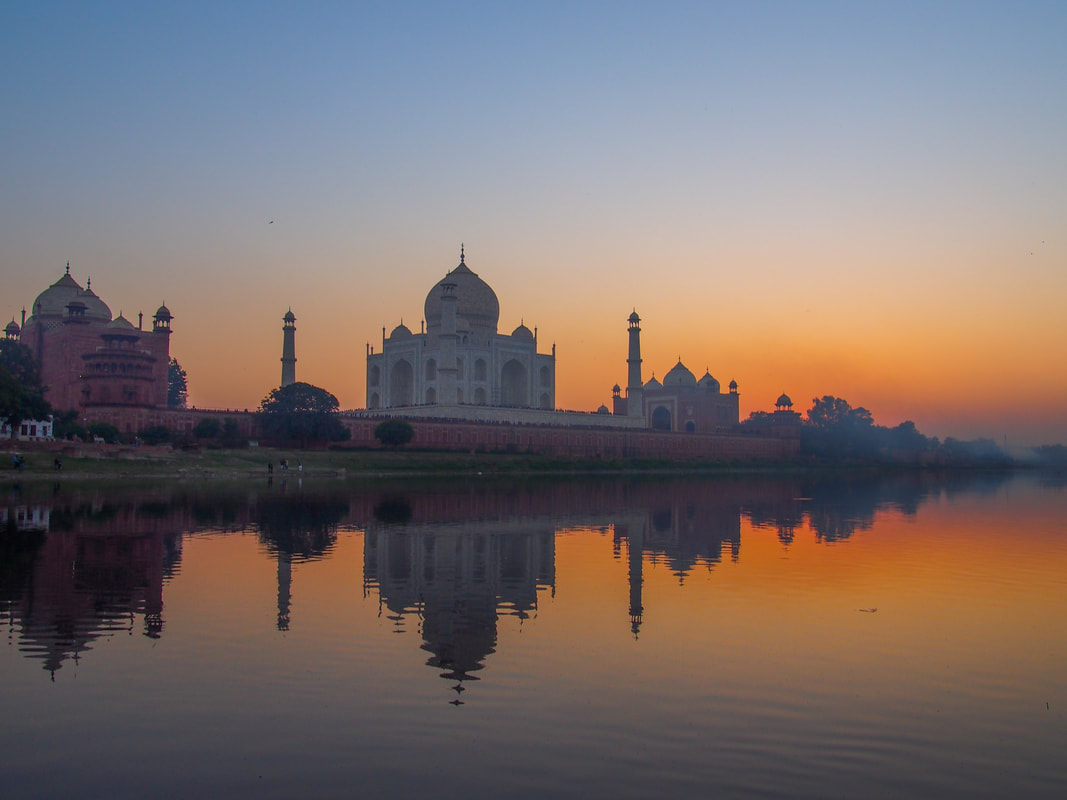The Taj Mahal at the Meeting Place of Life and Death, Splendor and Horror, Nature and Culture7/7/2022 The Taj Mahal is a contradiction. It is easily one of the most superb human creations to ever grace our planet—gorgeous, immaculate, perfect—everything they say and more. It is an exquisitely proportioned aesthetic wonder—a national treasure, a world treasure, a living treasure. It is also a hulking monument to the dead—the tomb of an emperor’s favorite wife. And in a country that has long struggled with poverty, the Taj Mahal was built at great expense; and it is at great expense that it continues to be maintained for the benefit of the millions of tourists who visit it year-round. The most striking contradiction may however be that this new seventh wonder—the subject of the world’s adoration and fawning—sits next to one of the world’s most polluted rivers. The Yamuna River is so polluted in fact that it is considered dead—an open sewer of industrial and human filth. The main sources of pollution are untreated sewage, pesticide runoff, plastic litter, and waste from leather and jewelry manufacturing facilities. It has long been considered by experts in India to be unsavable (in contrast to more recent hopeful assessments). The contrast between the immaculateness of the Taj and the abysmal condition of the nearby river could not be more striking. And nested within this contradiction is another: the Yamuna is considered by Hindus to be one of the holiest rivers. So, to recap, we have a monument to the dead, adored by the living, on a dead river, revered by the living. It might seem that there is a moral here about human priorities gone awry: a charismatic human construction prioritized over an element of nature. Perhaps this is true, but there may be a deeper story in all of this. For the Taj Mahal is also succumbing to decay—some due to the inevitably of time—much however due to local pollutants, including airborne industrial contaminants. The most obvious symptom is surface discoloration, but crumbling of the façade, and possible structural concerns with the foundation are others. Maintaining the Taj is a painstaking and time-consuming process, incorporating, among other techniques, the use of mud baths. The longstanding prominent theory of acid rain from sulfur dioxide emissions as the main culprit of exterior degradation has however recently been supplanted in favor of hydrogen sulfide emitted from the highly toxic Yamuna River. It is also now thought that the Taj is gravely threatened by the decay of its foundations due to the dropping water levels of the Yamuna. The state of the Taj Mahal is therefore deeply entwined with that of the river and the surrounding air. The primary moral lesson then may be the deep intertwinement of the natural and the cultural—each dependent in many ways on the other. Our lives and those things we treasure most cannot persist without looking after the most fundamental aspects of our existence. The truth is that great effort has gone into working to preserve and restore both the Taj Mahal and the Yamuna River. A final lesson is thus that actualizing our ideals and working through complex problems is at times frustrating and heartbreaking and not always successful. I still hope against all odds that the Taj will continue to sit in magnificence, but on a renewed and restored Yamuna like the one that Shah Jahan and the people of 17th century India once knew. I hope in other words that we the living can supplant death with life.
1 Comment
The State of Alaska is once again pursuing the Susitna Dam mega-project in interior Alaska. If built, this would be one of the largest dams in the U.S., in one of the most remote regions in the U.S..
https://www.alaskajournal.com/…/state-dusts-look-susitna-wa… I floated the Susitna's full length in 2012 and 2013 in order to get a firsthand look at what was at stake in the proposal: http://www.groundtruthtrekking.org/…/Glaciers-To-The-Sea-Su… https://chrisdunnonplanetearth.weebly.com/from-glaciers-to-… I've continued to keep up with the issue, even as I've moved on to other things. #susitnadam #alaska |
Chris Dunn, PhD
Researcher, writer, explorer*, photographer, thinker. Wrestling with nature, culture, technology. Archives
July 2024
Categories
All
*When I use the term "exploration", I mean it in a personal sense (discovery for myself, or at a unique moment in time [everywhere after all--even crowded cities--endlessly await rediscovery--by new eyes and in new moments]), not in an absolute sense. With few exceptions (notably Antarctica), almost everywhere on earth has had other people around for a long time (though to varying degrees - high mountain tops or places like the interior of the Greenland Ice Sheet for instance were far less visited and populated, and undoubtedly at least some pockets of the earth were never visited or populated). It is an enlightening experience though when on an isolated ridge in what feels like the middle of nowhere to wonder if anyone has set foot there but never knowing for sure. What is significant is that the landscape itself is left in such a condition that it isn't evident. Some places ought to be kept that way.
|

 RSS Feed
RSS Feed